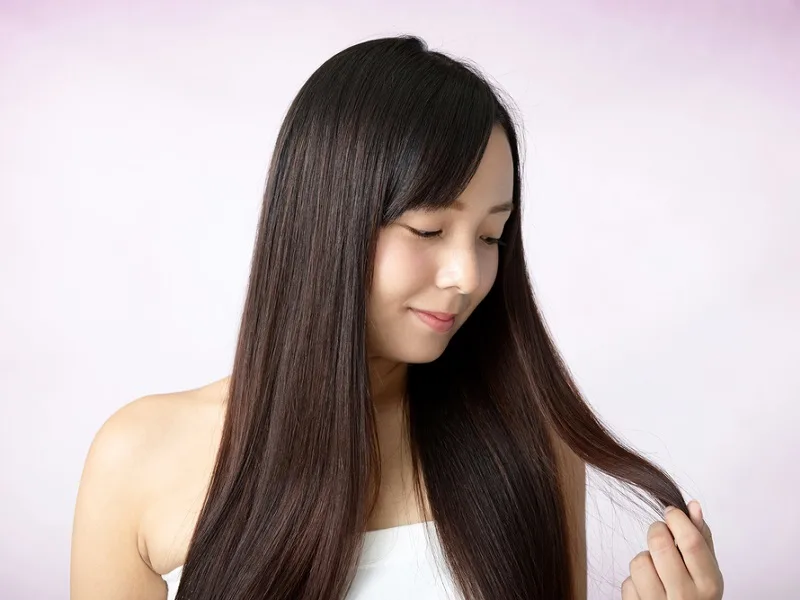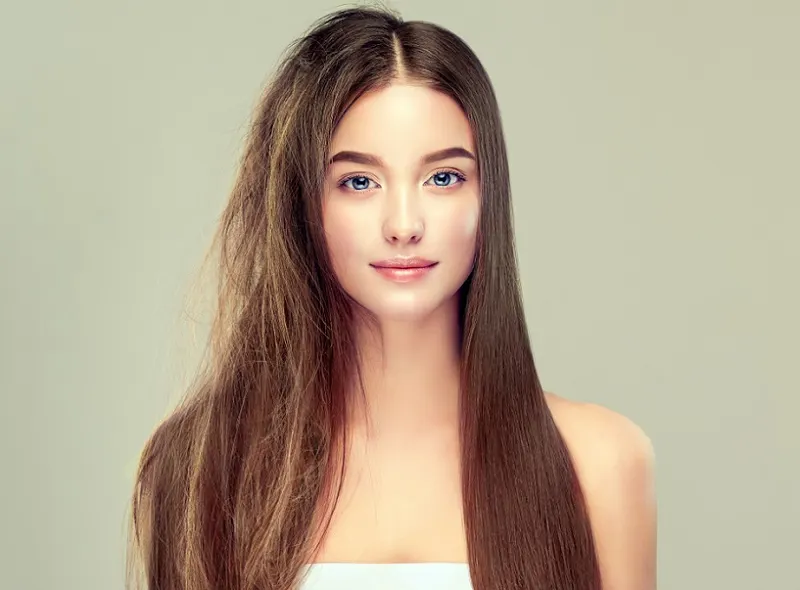The hair care industry has developed many solutions to help women who want smooth and shiny hair. Two of the most popular options on the market are keratin treatments and Japanese hair straightening treatments.
If you’re new to these methods, you may be wondering which one is best. Read on for a comprehensive breakdown of Japanese hair straightening vs keratin treatment to learn the differences between these two popular hair straightening methods.
Japanese Hair Straightening

Japanese hair straightening is also called thermal reconditioning, rebonding, or Yuko. This last moniker is for Yuko Yamashita, the technique’s inventor.
Pros and Cons of Japanese Hair Straightening
Japanese hair straightening alters the hair’s internal structure to remove any waviness or curls, which allows for a permanent effect. While the long-lasting aspect is excellent, Japanese hair straightening has some drawbacks.
First, since it alters the actual structure of the hair, it is pretty damaging. It might look great at first. However, in the long term, it can leave your hair looking more dull, frizzy, dry, and damaged than before you started.
Further, since the process causes harm to the cuticle that protects the hair’s shaft, Japanese hair straightening tends to create frizz instead of fighting it. You’ll still have to blow dry your tresses and take steps to avoid frizz (for example, by applying humidity-protecting pomades or serums).
How the Japanese Hair Straightening Process Works
Before applying a Japanese hair straightening treatment, the hair has to be divided into sections. This ensures a more even application and better result. The chemical straightening solution is then applied to each section, ensuring every chunk of strands is thoroughly soaked.
The solution then has to sit for anywhere from 30 to 60 minutes. The exact amount of time depends on factors like how long the hair is and its natural texture. After this, the hair is rinsed to remove the chemical solution. Finally, it’s blow-dried and flat-ironed for the finishing touch.
Note that Japanese hair straightening can take up to eight hours for people with super thick hair. Make sure you have something to keep you entertained!
Keratin Treatments

Keratin treatments are overall a more popular alternative to Japanese hair straightening. Find out why below.
Pros and Cons of Keratin Treatments
Before highlighting the advantages, it’s important to note one drawback of the keratin treatments: it’s only temporary.
That said, the effects are still long-lasting, with hair visibly changed for anywhere from three to six months, depending on maintenance.
Now, let’s discuss the benefits of keratin treatments. First, unlike the Japanese hair straightening treatments, keratin doesn’t damage your hair. It creates healthier hair over time. Keratin treatment doesn’t just straighten hair but it also adds shine and eliminates frizz.
But keratin treatment isn’t suitable for every hair type. If you have super curly hair, you won’t be able to eliminate your curls. Instead, you can expect it to soften the curls. If you have wavy hair, a good-quality keratin treatment should be able to soften waves.
How the Keratin Hair Straightening Process Works
So, just what does a keratin treatment entail? It’s a multi-step process that usually takes anywhere from two to four hours. The exact length of time depends in part on how long your tresses are and on the type of hair you have.
First, your hair will be thoroughly washed using a clarifying shampoo. The shampoo removes oils, dead skin cells, and products like pomades, serums, and hairspray that have built up in your hair over time. Then the hair is blow-dried.
Next, the keratin treatment is applied. It’s applied to sections of hair and worked through each section using a wide-tooth comb. Combing the treatment ensures the individual strands are fully coated in the treatment, ensuring maximum efficacy.
Let the keratin sit in your hair for some time, allowing it to penetrate the shaft and work its magic fully. Then, the stylist will blow-dry your hair again. A flat iron is then used to straighten hair and seal the keratin onto the strands.
Now, you have two choices. One option is to get your hair rinsed and blow-dried.
Once that’s done, you can then leave the salon and immediately style it as you wish. Alternatively, you can skip the rinse and leave the salon as you are.
However, if you take this second route, you have to protect the keratin for 72 hours. This means you can’t get it wet, style it, or even put it behind your ears!
Some women find these restrictions too stressful and challenging to remember, so they opt for the in-salon rinse.
Japanese Hair Straightening vs. Keratin: Which One Is for You?
Now you know the basics of keratin versus Japanese hair straightening, but which option is right for you? When deciding between Japanese hair straightening and keratin, consider the following:
- Your hair type: Is your hair curly or wavy?
- The health of your hair: Is it colored, recently bleached, or very fine?
- Your desired outcome: Do you want to make it straight or also fight frizz?
In general, keratin treatments are preferable because they do less damage to the hair. They also have the added benefit of improving hair’s health, reducing frizz, and adding shine. This helps cut down on blow-drying and flat-iron needs.
That said, the Keratin treatment isn’t suitable if you have super curly hair. They won’t deliver stick-straight hair but soften the curl. If you’re determined to tackle your curls, a Japanese hair straightening treatment may be preferable.
It’s best to use caution with any straightening procedure if your hair is very fine or damaged. People with bleached or colored hair may experience breakage, which can leave hair appearing sparse.
It’s always best to consult a professional stylist before deciding whether and how to straighten your hair. These procedures involve using chemicals that can harm your hair if they aren’t used or applied correctly. Trust an expert, and don’t try to DIY these treatments.
Summary
Here’s a comparison table with differences between Japanese Hair Straightening and Keratin Treatments:
| Japanese Hair Straightening | Keratin Treatments | |
|---|---|---|
| Process Time | Up to 8 hours for thick hair | 2 to 4 hours |
| Duration of Effects | Permanent | 3 to 6 months |
| Damage to Hair | High, alters the hair structure | Low, does not damage hair |
| Effect on Frizz | May create more frizz | Eliminates frizz |
| Suitability | Works for all hair types, but can cause damage | Not suitable for super curly hair, doesn’t cause damage |
| Additional Benefits | None | Adds shine, makes hair healthier |
| In Salon vs At Home | Strictly in salon | Mostly in salon, at home with care |
| Maintenance | May require further styling to fight frizz | No additional styling required |
| Application Process | Chemical solution applied, rinsed, dried & ironed | Keratin applied, may or may not be rinsed, dried & ironed |
| Cost | Typically more expensive | Generally less expensive |
| Regrowth Appearance | Noticeable difference in treated and untreated hair | Gradual transition makes regrowth less noticeable |
| Hair Washing Restrictions | Immediate washing not usually a problem | Must avoid washing for 48-72 hours after treatment |
| Effect on Shine | May decrease shine over time due to damage | Increases hair shine |
Many women covet sleek, straight, shiny hair. Even if Mother Nature didn’t bless you with naturally flawless locks, you could achieve them with the help of Japanese hair straightening or a keratin treatment.

